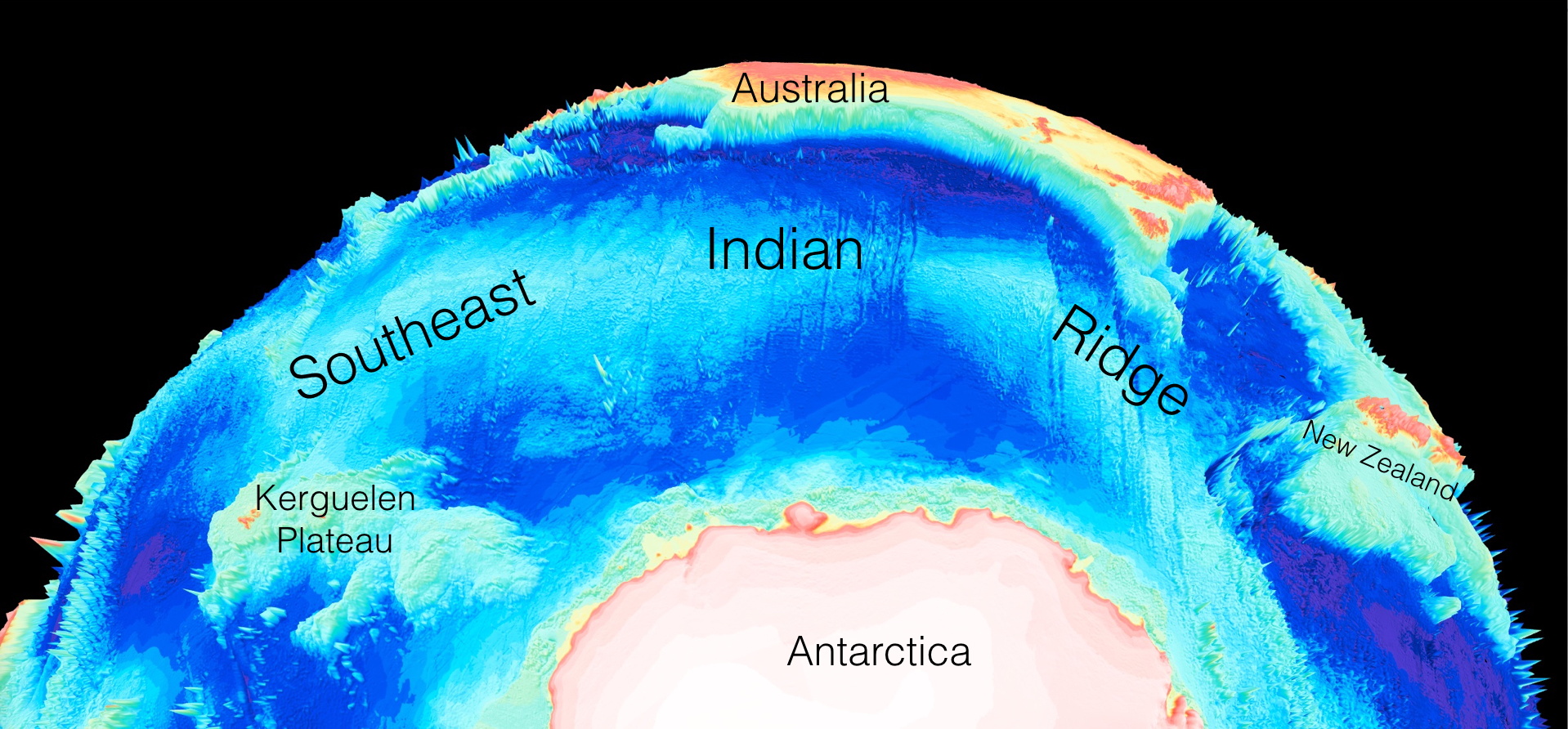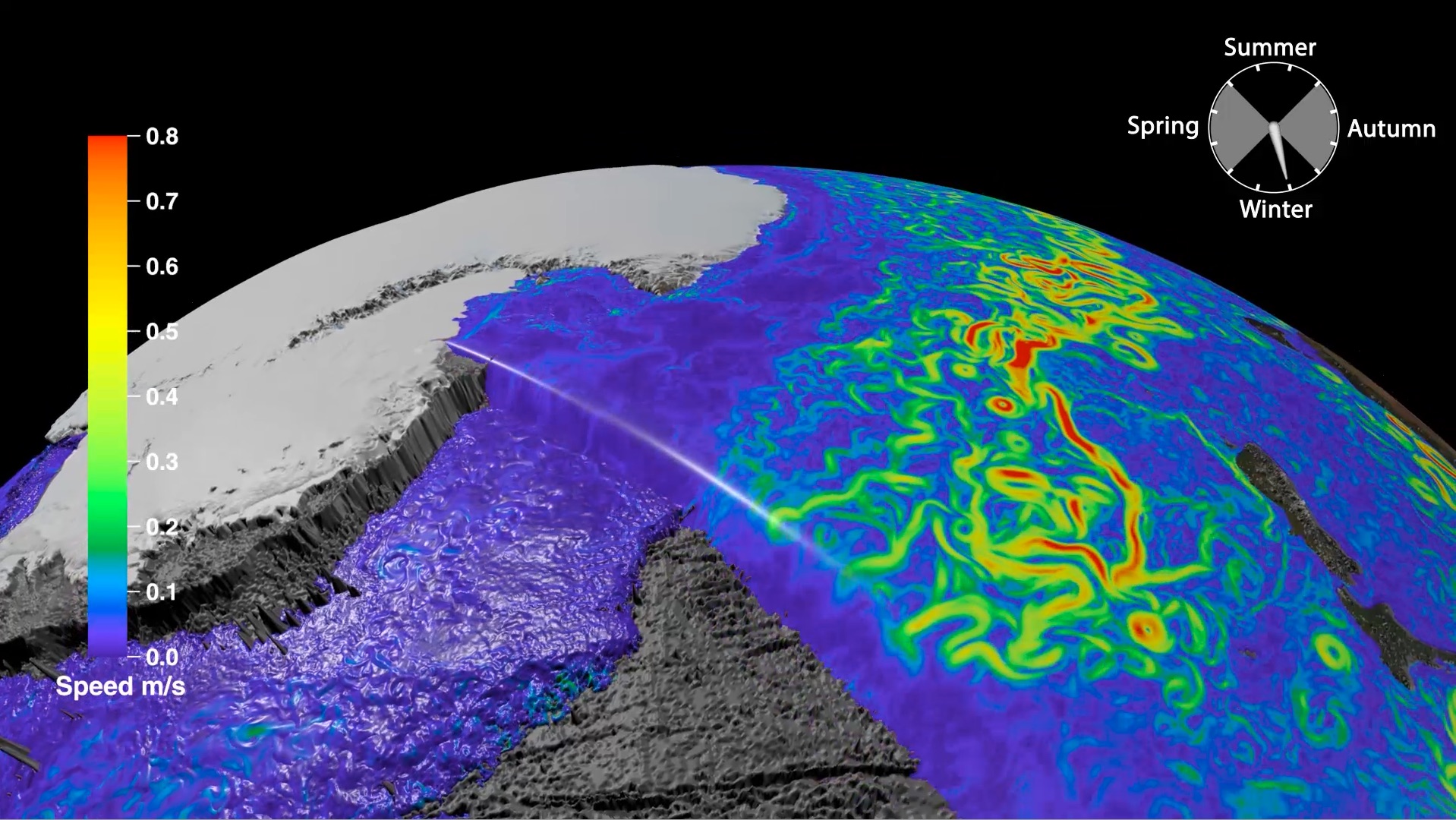
A team led by the University of Sydney School of Geosciences has found an 8,000-km long sediment pile-up in the middle of the Southern Ocean, making this feature unique in the world. Their study was published today in the leading international journal Geology.
We often think of the deep ocean as a quiet place where dust particles and remains of dead organisms gently rain through the water column and accumulate undisturbed over millions of years. Although this is a simplistic view that is exactly what geologists would expect to happen in the ocean’s great abyss far removed from the continents.
Now geologists Adriana Dutkiewicz and Dietmar Müller at the University of Sydney have teamed up with oceanography experts Andy Hogg at the Australian National University and Paul Spence at the University of NSW to show that a region about half way between Australia and Antarctica has been intensely disturbed by deep-sea currents.
Adriana Dutkiewicz says: “We first noticed the sediment pile-up on a map we created for another project and we wondered what it was. Imagine driving across Australia and back, that’s how long the feature is. Its size and location in the middle of an ocean make it a global anomaly.”

In order to work out what caused such intense disturbance of deep-sea sediment, the team combined geological observations from the seafloor, some dating back to the 1960s when little was known about the oceanography of the region, with a high resolution computer model of deep ocean circulation. They found that sediment is removed from regions of intense bottom current activity and transported as dense clouds of particles towards and along the mid-ocean ridge where they are dumped on the seafloor.
Paul Spence says: “The deepest ocean currents flow across vast distances but we know very little about them. Now cutting-edge supercomputer simulations, taking over a month to run on Australia’s largest supercomputer in Canberra, give us a very detailed picture of the dynamic flow of these mysterious currents for the first time.”
Andy Hogg adds: “Our new high-resolution models show that bottom current speeds reach almost 1 km per hour, which is very fast for this region of the Southern Ocean. Our work shows that the sediment has been moved around since at least 3 million years ago.”
The good news is that the sediment accumulation linked to the powerful Antarctic Circumpolar Current that modulates global ocean temperatures, likely contains a high-resolution climate record of the region.
Dietmar Müller adds: “The Southern Ocean is very sparsely sampled. The sediment accumulation provides an exceptionally valuable ocean drilling target for high-resolution climatic investigations of the Southern Ocean.”
Dr Dutkiewicz concludes: “We might think that the age of discovery on our planet is well and truly over – there is certainly no unknown continent left to be discovered. But while exploration is now focussed on other planets and space beyond our solar system, there are still exciting discoveries to be made in the largely unmapped, deep oceans.”
The paper, Vigorous deep-sea currents cause global anomaly in sediment accumulation in the Southern Ocean, can be viewed here.
![]()
